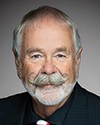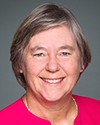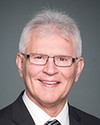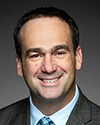As far as areas go, sure, I could give you a list.
I think the underlying factor for all the areas that Trout Unlimited would identify is the value and the ecological function of the spaces. Those spaces tend to be what our national biologists refer to as “endangered spaces”, and those are headwaters.
Think of the foothills of Alberta. Once those waters are actually utilized and taken up, for whatever reason, or once land use practices actually change the hydro-geography of that area, everything downstream, which is basically all of southern Alberta, is realizing some significant impact in water quality, flooding, and all those sorts of things.
These headwater areas across the country, not just in the foothills, are extremely important. We were thrilled to hear about the first-ever habitat protection order for cutthroat trout. That was absolutely amazing. As a result, I think the province there put some protection through the Castle wilderness area there.
Unfortunately, actions and land use practices are still such that the habitat is being degraded, so we need to talk about what these protected areas look like. Is it okay to run ATVs through these rivers non-stop and disrupt spawning? Is it okay to disrupt groundwater upwelling? I think my answer would be that headwaters are where we need to start.




